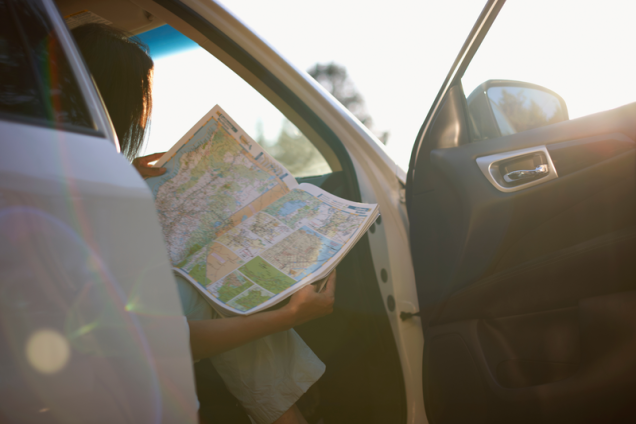I can remember exactly the last time I used a map. It was in 2006, when I was researching my book Adland. I was standing on a bridge in Chicago, trying to work out which direction I needed to walk in to find West Wacker Drive, the home of Leo Burnett.
I’d picked up a map from my hotel and now, in a stiff breeze that made Chicago’s nickname “The Windy City” seem entirely appropriate, it was trying to wrap itself around my face. Luckily a Chicago resident took pity on me and offered directions.
Since then it’s been Google Maps all the way. The internet and smartphones have disrupted the map business just as they’ve disrupted everything else. Which is, in a way, kind of a shame. Certainly, old-fashioned paper maps are inconvenient. But they are also romantic.
I’ve long been of the opinion that no book that begins with a map can ever be entirely bad. Possibly this springs from the fact that the first book I can remember truly adoring was Treasure Island. X marks the spot. No map, no story. I also loved that book because my father used to read it to me aloud; he did a perfect pirate accent.
My dad was also a great fan of maps. He kept a whole bunch of them in the glove compartment of his car – a lurking concertina of paper that would spring out if you opened the door too quickly. Many weekend road trips began with dad poring over a roadmap in search of a certain castle or haunted house.
One of my favourite shops in London is Stanfords, which has been selling maps, atlases and travel guides since 1853. To walk through its door is to get in touch with your inner explorer. Understandably, since paper maps and guides are out of fashion, it has diversified into mainstream fiction and opened a coffee bar.
Talking of travel guides, these have also evolved for the digital era. Most of them are now available in app form, although I’m sure a few travellers still prefer the heft of a book. Can an app squash a mosquito? Or stop a bullet? Or merely add exotic spice to your bookshelf?
Since I’m currently working on a book about the history of travel, I recently chatted to Aurélie Boué of BETC Luxe, which works with Louis Vuitton on its posh city guides. Aurélie told me that although the guides are also available as apps, the paper versions sell very well. “They are both beautiful and useful,” she said. “Luxury objects that are nonetheless accessible.”
In fact, they’re a perfect example of branded content. And since Louis Vuitton started out making steamer trunks for intrepid travellers, they’re entirely in line with the brand’s values.
Unlike regular guides, which are updated every three years, Louis Vuitton City Guides are updated every year, by journalists who are either residents of the cities concerned or know them extremely well. The places they recommend in each city aren’t necessarily expensive – but they are often a little confidential.
I admit to having a small selection of Louis Vuitton guides on my bookshelf. I also have a much larger collection of battered Rough Guides, the British equivalent of Le Guide du Routard. They contain far more than lists of hotels and restaurants. When I look at them, they provoke memories.
Mark Ellingham, who founded the Rough Guides in 1982 (and sold the brand to Penguin Books many years later), told me he retained an affection for print. “I think a paper guide still offers fantastic value for money. Even if just a one restaurant recommendation leads to a memorable evening, a guide has paid back the money you spent on it. Plus you haven’t wasted loads of time trawling the internet.”
Maps, too, have a value that goes beyond functionality. The walls of Stanford’s bookstore are decorated with maps, and many of them end up in people’s homes. The biggest future for maps is in interior design.
I’m sure a few of the rooms in your life have featured maps. There was a map of the world in the bathroom of my apartment in Brixton, London. Ironically, the shower curtain in my current bathroom in Clichy is a map of the London Underground. My son loves studying it and learning the names of the stations. He already understands, instinctively, that to look at a map is also to travel.
Imagine the rain lashing at your window as you sit at home. You pour a cup of tea and gaze at a map. And suddenly you’re no longer there. Like Huck Finn, you light out for the territory.




